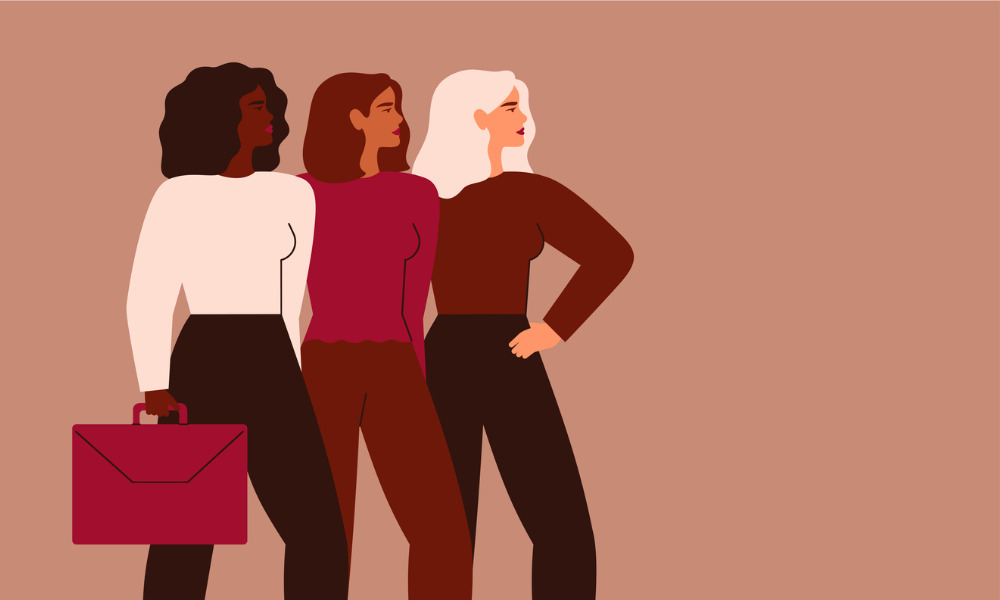Why have working women been disproportionately affected by the pandemic?

Diversity and inclusion initiatives have been picking up steam in recent years – notably spurred by the recent Black Lives Matter and #MeToo movements.
But how are these societal advances reflected in the workplace? And how have they been affected by COVID-19?
Multiple reports in the last year have indicated that women have been disproportionately affected by the pandemic – especially BIPOC women.
A survey in late 2020 by Deloitte revealed that, globally, seven out of 10 women who experience negative shifts in their routine as a result of the pandemic believe their career progression will slow down.
Though the past few decades have brought much positive change for women, being a woman in the workplace in 2021 isn’t easy – especially in male-dominated industries.
Female leadership is a huge concern for businesses and organizations – and if it isn’t then it should be. Recently, COS held its highly successful Women in Safety summit in March which saw hundreds of attendees take part in the day’s proceedings. We also recently published our Top Women in Safety 2021 list.
Continuing in the same vein, COS held a Women in Safety webinar on May 13 called: “Breaking the glass ceiling in OHS: Elevating women into leadership and executive roles.”
Moderated by Dr. Karen McDonnell, Head OHS Policy Adviser, The Royal Society for the Prevention of Accidents (ROSPA), our four speakers shared their experience in the workplace and what can be done to improve female leadership, from entry-level gigs all the way up to the C-suite.
Taking part in the panel were: Shelley Scalzo Brown, Corporate Safety Director, Bergelectric; Sheri Wood Hanson, Safety & Environment Director, Schneider Electric; Mark Roche, Global Director – EHS and Sustainability, Autoliv Inc.; and Ana Reyes, BEng, CRSP, Director, Global Health & Safety, Northland Power Inc.
A male-dominated industry
Roche spoke about the difficulties that women still face in male-dominated environments, such as the skilled trades, where women can be seen as outsiders or not taken as seriously as their male counterparts.
This kind of attitude affects safety, because OHS professionals need to be taken seriously, and need to have their voices heard – regardless of their gender.
“Regardless of who the messenger is, the message is important,” said Roche.
To be successful in that kind of environment, he says that “it takes guts, it takes stamina, and having a voice and really going after what you want.”
This was a sentiment echoed by Wood Hanson: “You’ve got to have the guts to say, ‘I can’t change how that person thinks but I can change I can react’.”
“Coming to the industry as a woman is typically a challenge,” said Reyes.
She said that it is both an external challenge (comments in the workplace, lack of mobility, etc.) but also an internal challenge which you create by not believing in yourself.
And confidence is something that you acquire and keep on building on throughout your career, said Reyes.
Soft skills
Being a woman in a leadership role, gender bias is one of the most obvious difficulties to face – as well as being the only woman in the room, said Reyes.
Speaking about her engineering background, she said that she was often one of the only women in the classroom or in the workforce.
But women bring a lot of specific skills to the table. The way that women think is different from men, said Reyes, “take advantage of these natural skills to add value to the conversation.”
“In a position of leadership,” said Reyes, “I use my position as a woman, I use my voice as a woman, to add to the conversation.”
The case for diversity
Being a woman in safety can be very isolating: “When I started my career […] I didn’t see a lot of people that looked like me,” said Scalzo Brown.
“One of the biggest things to overcome is often being the only woman in the room,” concurred Wood Hanson.
Scalzo Brown said that the idea of what qualified someone in the role of safety professional was very entrenched and skewed towards men. Eventually, she said that she was able to succeed because her different way of thinking allowed her to bring an alternative perspective to the table.
“Progress really became possible when we all changed our minds about what that career path could look like,” said Scalzo Brown.
We have to be more intentional about change, and design teams around hearing diverse voices which helps fade away difficulties – not to mention being generous and proactive about bringing a wide range of people into your group.
“The case for diverse perspectives is really well made,” she says. “You’re not alone. Build a team, find your tribe, be there for them.”
The importance of mentorship
McDonnell said that in her experience, mentorship is a very important piece to raising female voices.
Reyes added to that and said that finding a sponsor in your workplace is crucial, and to find someone that can advocate for you and give you visibility. She said that you should ask to be part of business conversations to increase not only your profile but the visibility of OHS.
“There is nothing wrong with asking to be brought into the room to be part of the team,” said Reyes.
“We’re in this career because we are passionate about people,” she said, so why not use that same passion to promote and support the next generation coming along.





